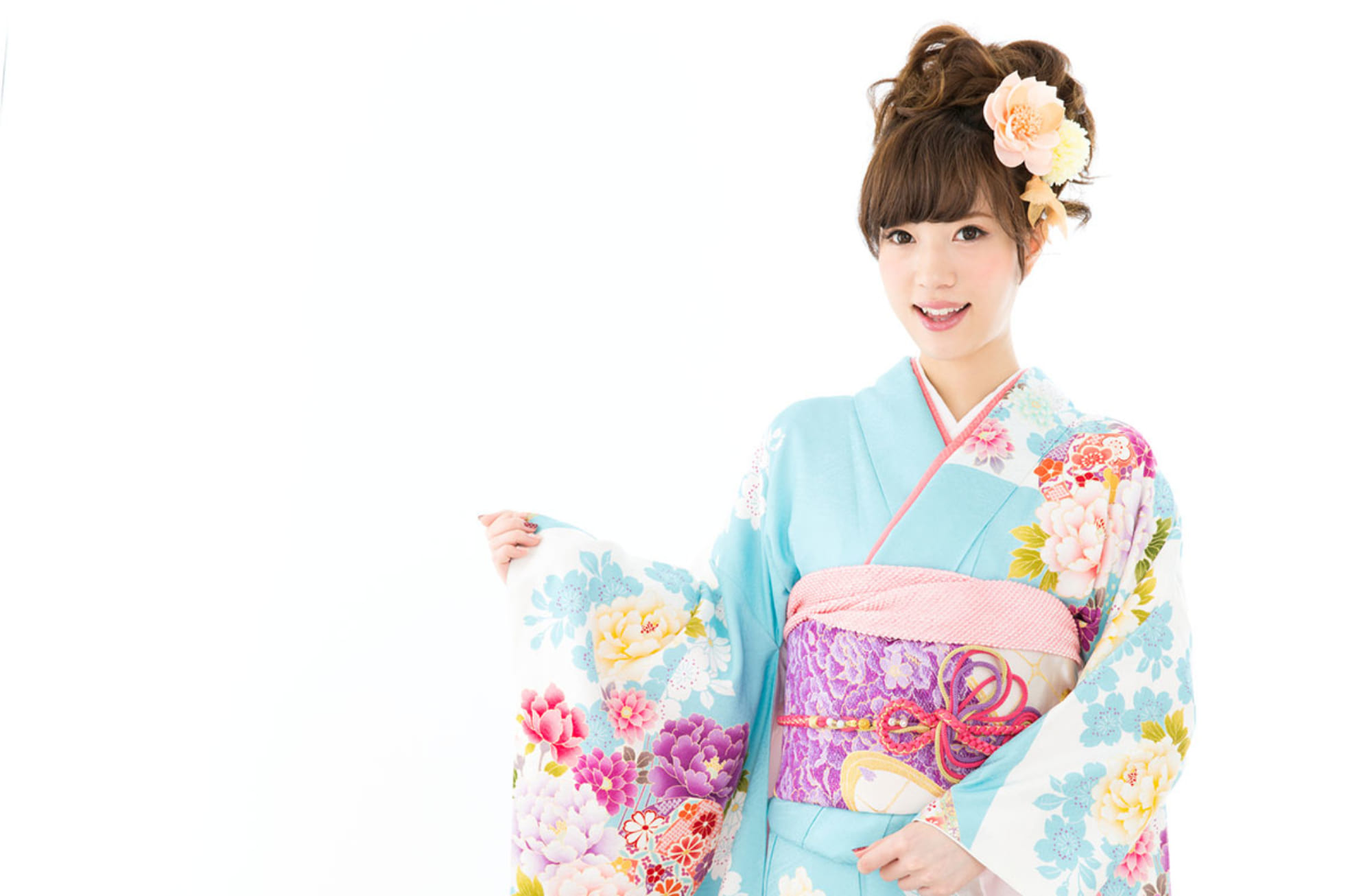Hakata ori
In Hakata ori, there are more warp threads, and the design is made by these threads. The tightly compacted warp threads are woven tightly and repeatedly using thick weft threads, and the resulting fabric is stiff and hard to loosen once it has been tied.
It has a distinctive squeaking sound, and it is well-loved as a hanhaba obi (half-width obi) for summer. The obi known as sha-kenjo matches well with yukatas and summer kimonos.
The typical hakata kenjo patterns are simple patterns consisting of stylized designs of Buddhist tools known as dokko and hanazara and stripes of varying thickness (thick and thin stripes represent parent and child accordingly). The feudal lord of Fukuoka, Kuroda Nagamasa, would present (kenjo) the fabric to the shogunate, which was how it got its name. Sankon, gokon and hoso-kenjo are names based on the number and thickness of the stripes in the pattern. Other stripe patterns are called koko-gara and oyako-gara, symbolizing parent and child.
Hakata ori is said to be brought to Japan from China by merchants from Hakata who brought back 5 skills they learnt in China. As it requires a large amount of strength to weave, it is often woven by men.
Nagoya obis and hassun obis made from the colorful mon-ori (woven design) Hakata ori are widely produced because of the rustling silk sound it makes and also because they are easy to tie.
[quote style=”boxed”]In Japanese
博多織
博多織は、経糸の本数が多く、経糸によって絵柄を表現します。一度締めたら緩まないといわれる帯地の硬さは、密度の高い経糸に、太めの緯糸を強く打ち込むことで織りに張りをもたせていく三度打ち、打ち返しの方法によるものです。帯をしめるときのキュッキュッと絹鳴りの音が特徴で、夏の半幅帯として長く愛される理由でもあります。夏の帯としては紗献上といわれるものも、夏着物や浴衣によく合います。
代表的な博多献上は、独鈷、華皿の密教の仏具や法具を図案化したものに縞の太さの違いを親子に見たてたシンプルな模様で、福岡藩主黒田長政が幕府に毎年献上して納めていたことから名付けられました。三献、五献、細献上などと献上柄の数や太さ、その中の縞の太さも孝行縞、親子縞などの呼び方があります。
博多織は博多の商人が宗からもどって帰国した際に、他の素麺など五つの技術と共に伝えられたといわれ、力強さが必要とされる織り手の多くは男性でした。
紋織博多は、多彩な色の織り柄で名古屋帯、八寸帯などもあり、こちらもしめやすさと絹鳴りが持ち味で生産が伸びています。
[/quote]
